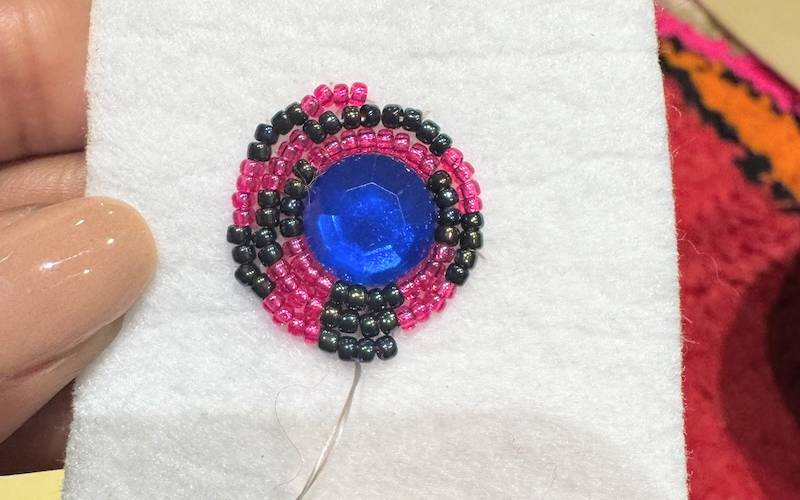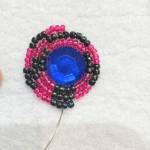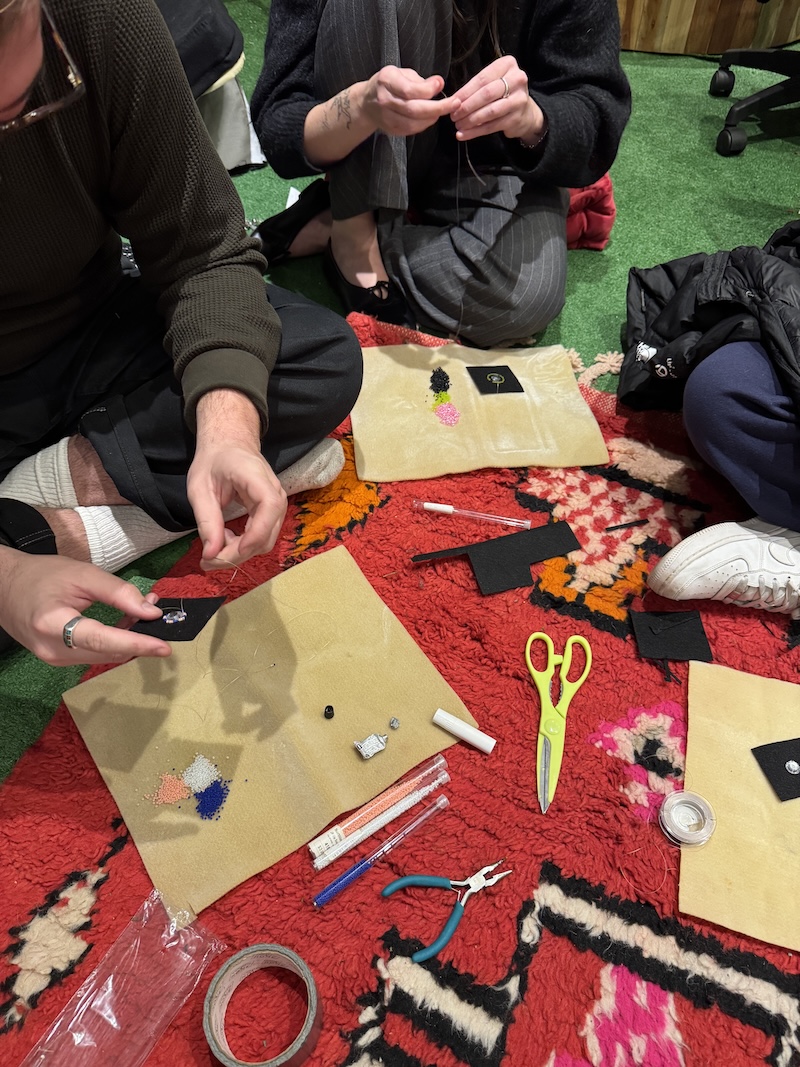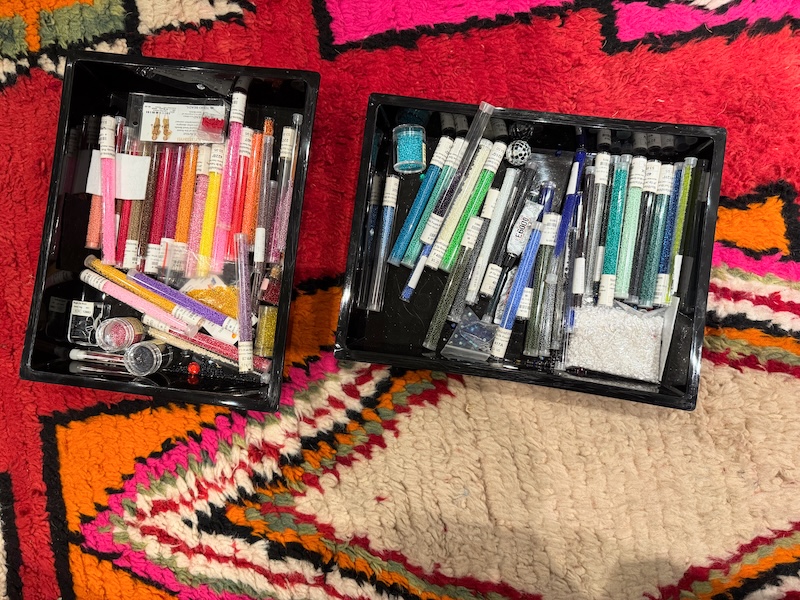Making It
Beading Circles with The Urban Indigenous Collective


Growing up, every year for the holidays, I would make my way across my one-mile town to my Nanna’s house. Sitting in her hot kitchen, the back door propped open to release the steam from the greens and the grease from the stove, her sister, my Aunt Ellen, who’d be giving Nanna a side-eye that can only be recreated by an older sister to a younger one.
When all the kids were watching Nickelodeon in the den, I would slide into the kitchen table booth, wedge myself into the corner so that I could see the entire room, and I would get extremely still. My theory was that if I didn’t move or make a noise, they would forget I was there. That is when I would get to hear the real gossip, the dark jokes, and my favorite, the family histories.
I’ve lost many of those stories to time now, but one that stuck was that of my alleged Lenni Lenape ancestry, specifically a woman living in South Jersey, my paternal great-great-grandmother.
Unfortunately, if I was ever told her name, it’s long gone from my memory now.

I have a complicated connection to my ancestry.
It makes me sad that the ancestor I have the deepest paper trail for is a man named Charles Dendy, who owned my maternal four-times-great-grandmother Rebecca Dendy. Charles fathered and owned their daughter Frances Dendy.
I don’t know what kind of man he was. But owning your daughter tells me a little something.
I have his portrait. I can tell you what color his eyes were and what color his suit was. Through him, I have a direct and clear claim to being a Daughter of the American Revolution, if I ever wanted to push for it.
For any non-white, pre-Civil War ancestor, all I have are oral histories. I am left grasping at echoes of memories to make ghosts real.
Which is what brings me to midtown Manhattan on a Thursday evening.

I have been meaning to come to the beading circle at the Urban Indigenous Collective since last year. I’ve bought tickets to previous events but never made it. A work call would come up, or my day would be too long.
But the truth was I felt like I would be an outsider. I’ve thought about booking a trip to Scotland and Ireland for Dendy, but I couldn’t go to midtown for her?
When I put it like that, it sounded silly. So I popped on the bus and got there way too early.
When the doors opened, we settled into our seats on the floor at the Urban Indigenous Collective on 35th Street. While I’m a naturally shy person in big groups, I did feel so safe with this group in a way that is not normal for me.
That night, the Indigenous Beading Circle was led by Logan Tootle of the Cherokee Nation. Logan did an amazing job leading the circle of fifteen makers through how to embroider our pieces.
I don’t need another craft, and yet I instantly felt so locked in with this one.
We worked with Pellon for the base fabric. It’s like a thick, stiff cotton batting. We used a flat back rhinestone, glued to the Pellon, as a guide to keep our lines straight. A handful of seed beads got us going.
What I loved even more than learning a new skill was hearing the conversations around me as I stitched. So many of the people there knew exactly who they are. They came from a deep, rich connection to their ancestors—it made me want to dive even deeper into my own history again.
In the lesson, we learned how to do the lazy stitch and the running stitch with beads, and how to improve our tension. My favorite tips included using a needle one size smaller than your thread. It’s hard to thread a needle that small, but it prevents your thread from slipping out as you work.
Logan also shared that your first piece should be gifted.
I subconsciously chose pink and green as my colors before I knew this. Those are the same colors of the Alpha Kappa Alpha sorority that my mother is a member of, so this piece is meant for her apparently.

The Urban Indigenous Collective is a 501(c)(3) nonprofit organization. The Indigenous Beading Circle was created with the intention of welcoming both Indigenous and non-Indigenous creatives of all skill levels to join in a safe space for open discussion and knowledge sharing.
Tickets are free for all Indigenous-identifying people. For non-indigenous allies, the organization suggests a donation of $20.
While attending was an incredible experience, supporting their work to make sure that Indigenous people are able to experience this programming for free is so important. If you would like to support this amazing cause, click here.
This little swatch may seems like just a beaded sampler, but, for me, it’s a seed (pun intended) to inspire me to uncover my roots—and the beginning, maybe, of another creative path.


Samantha, you have me hooked. I can’t wait to find out what you learn.
You said, “but I couldn’t go to midtown for her?”
I immediately thought of my Great Grandmother, maternal side. I can’t find her at all. No name, no records, no mention of her death giving birth to twins, taking 1 with her…the other to follow them 6 months later.
I have had a knitting pattern widely used by the knitters of that generation on the Isle of Aran, Scotland, since 2000.
And I can’t knit it for her?
Samantha, your experiences are often both enlightening from a social point of view and interesting in and of themselves. Thanks for giving me a good “think” for both our multi-cultural nation and for me personally as to how I fit into it as the granddaughter of immigrants. And as a former sewist I am familiar with Pellon and how it is used to stabilize collars, facings and such. How interesting that it is used these days in beading.
I am so glad that you stepped into the discomfort of going and got on that bus! Here in New Orleans, we have the Mardi Gras Indians. You know someone is an Indian when you see them working on bits of the next year’s beaded costume when they are out and about. If you have not heard of them, look them up. The finished costumes are breathtaking, the songs are wonderful (Iko Iko is about the Indians but there is a large body of music that the Indians compose and perform that is well known locally) and, now that the more violent aspects of the competition have been channeled into costuming and music, it is a really lovely tradition that pays homage to the deep historical connections between Native Americans and enslaved African (mostly Senegalese) Americans in our corner of the country.
“I’ve lost many of those stories to time now…”
This sentence really hit me.
Thanks for this beautiful piece.
As I read this, I can see you perfectly – you’re sitting across the table from Dr. Gates on Finding Your Roots and he and his team have uncovered every detail about your ancestry – with all of us watching the show! Now that you’ve met Martha Stewart… Henry Louis Gates next?! Thank you for sharing this glimpse into the complexity of family heritage.
I actually knew him or rather he knew my grandfather. My grandfather founded the African American Historical Society Museum in Jersey City and Henry Louis Gates came to a few events and filmed at the Museum when I was a teenager. This was about 20 years ago. But I remember him being absolutely lovely!
I loved reading this. My husband and I have often remarked that we wish we had more of those stories from family history. We should have asked while we could. I learned my crafts from my mother and grandmothers. I appreciate that legacy so much. Thank you for this article.
Thank you for sharing your story and I’m so glad you got on the bus also!! I have to great grandmothers on both sides of my family. There was a picture of one of them when I was very young visiting my father’s family in MA. The other great grandmother is just a name and alas there were no stories handed down about either one of these ladies. There is always so much left out about family backgrounds. I agree with the person who said you should go on Finding Your Roots. You are our celebrity!!
I am trying to fathom how you sit with the knowledge of two of your ancestors being the property of another ancestor. As appalling as it is, the situation is such a common thread in the fabric of our history that I’m sure the Daughters of the American Revolution could be filled with descendants who share this narrative, and thereby be improved greatly. Thank you for sharing this Samantha and next time please take me with you to beading circle.